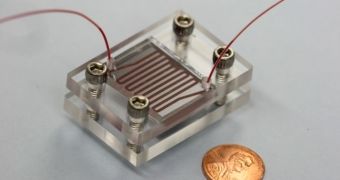A team of investigators from the University of California in Los Angeles (UCLA) and their colleagues announce the development of a new device, that works just like Velcro in eliminating free-floating cancer cells circulating through the bloodstream.
The new tool simply grabs the affected cells, and can then dispose of them safely. This device works at the nanoscale, the research team says, and so it could be used for both cancer research and treatment.
Its main targets are circulating tumor cells (CTC), which previous studies have linked to playing an important role in the development of cancer metastasis. This is when the cancer spreads to all organs, and there is nothing that doctors can do to save a patient.
This complication is the primary cause of death in people who have solid tumors. CTC are essential in this regard, as they are capable of leaving the original tumor site, and start another “colony” somewhere else in the human body.
The way it does this is by traveling through the bloodstream, and that's when they become vulnerable to attack. However, tracking them down and capturing them has proven to be an elusive objective for the past century or so, LiveScience reports.
At this point, oncologists tend to search for tumors by using invasive biopsies, but identifying such a site is difficult. Trapping CTC in the blood would essentially provide the healthcare experts with a new diagnostics tool, in the form of a “liquid biopsy.”
This would allow for the early detection of infected cells, and for placing accurate diagnostics too. Generally, the earlier a cancer is discovered, the higher the chances that it can be successfully addressed.
At the same time, the new CTC-trapping method could be used to monitor the development of the disease, as well as the overall effectiveness of the treatments being applied. It could also be possible to analyze the patient's response to a particular drug or therapy.
Such a capability would make it easier for doctors to bring personalized medicine closer to the patients.
“This new CTC technology has the potential to be a powerful new tool for cancer researchers, allowing them to study cancer evolution by comparing CTC with the primary tumor and the distant metastases that are most often lethal,” says researcher Kumaran Duraiswamy.
The study team member, who holds an appointment at UCLA, is also the coauthor of a new study detailing the technique, which is published in this month's issue of the journal Angewandte Chemie.
“When it reaches the clinic in the future, this CTC-analysis technology could help bring truly personalized cancer treatment and management,” Duraiswamy explains.

 14 DAY TRIAL //
14 DAY TRIAL //